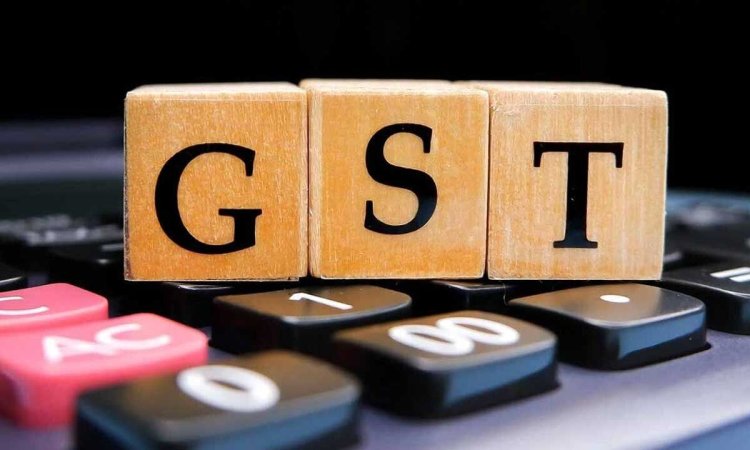Basic Concepts of GST: An Explanation in Detail
A comprehensive, destination-based tax system, GST is introduced to overhaul the indirect taxation structure of India. It amalgamates various taxes, including VAT, excise, and service tax, into one unified tax applicable uniformly across the country. GST works on a multi-stage mechanism in that value addition at different stages of production and distribution is taxed. The major ingredients of the tax administration structure are Central GST, State GST, and Integrated GST. It is applied based on intra-state and inter-state transactions. GST relies on the input tax credit, meaning that businesses can claim input taxes paid. A simple and transparent framework increases compliance and checks the cases of tax evasion. GST concepts have to be understood with the filing of returns by entities, managing business finances, and ensuring adherence to regulations that make it beneficial for both individuals and the business.

Goods and Service Tax GST is nothing but a tax reform initiative in India. In places where several taxes exist, that will be clubbed together under GST. It is fair and simple. So, day by day, many people are trying to learn the basic concepts of GST. Hence, this type of learning would allow people to learn the procedures of taxation rules and improve their competency in accounts and taxation. So, in this blog post, we are going to look at what GST is and its functionality, importance, and what courses can be of value in elevating your expertise in this field.
What exactly does GST stand for?
Additional tax on goods, services, or other items purchased, added to their price is GST. The reason it is referred to as an "indirect" tax is that it is collected by businesses at the point of sale from the consumers. In comparison to the point of production tax, the tax is levied at the place of consumption of the product or where it is used. The GST is the tax that was implemented in India on July 1, 2017. In the Indian context, replacing VAT, Service Tax, and Excise Duty under GST proves to be more manageable for businesses to ensure compliance.
Features of Goods and Services Tax (GST):
One can say that a Comprehensive Tax has various services such as Central Excise, Service Tax, and VAT under a single tax structure.
2. Destination-Based Tax: Revenue is forwarded to the state in which the goods or services are utilized.
3. Input Tax Credit, popularly referred to as ITC, is the provision of GST by which businesses can offset a part of the taxes paid on inputs, preventing the cascading effect.
4. The Indian GST structure is a dual one and comprises the following:
- CGST refers to the Central Goods and Services Tax.
- SGST stands for State Goods and Services Tax.
- IGST stands for Integrated Goods and Services Tax and it is applied to inter-state supplies.
Benefits of GST:
- The tax system has become simpler.
- Tax evasion is minimized which reduces the effectiveness of taxation.
- Encourages efficiency in doing business.
- Indian goods and services have become more competitive in the international market.
Types of GST in India
In order to understand GST precisely, one must know its variants.
The Central Goods and Services Tax is what the CGST comes under and is imposed by the Central Government on inter-state transactions.
SGST or State Goods and Services Tax, is imposed by the State Government on intra-state transactions.
It is the tax collected by the Central Government on inter-state supplies for goods and services. UTGST is the full form of Union Territory Goods and Services Tax, which has been applicable in the Union Territories of Chandigarh and Lakshadweep.
Goods and Services Tax Rates
The GST is applied at different rates for every product and service type. The primary categories under GST are as follows :
- 0% - includes grains and vegetables.
- 5% for everyday commodities like food.
- Anything in the form of goods and services, usually in the bracket of 12% to 18%
- 28% of any expenses go towards luxury goods like cars and tobacco.
It is an important process for businesses to understand what these brackets are, so they can classify their products correctly and avoid being penalized.
Registration of Goods and Services Tax.
If the business earns more than a particular amount of income in a year, then it should be enrolled in GST. GST stands for Goods and Services Tax. Furthermore, enrolling can also be done hassle-freely through the online portal. It is also vital because only after registration, the business is allowed to claim the tax paid during the operations and also charge appropriate GST.
GST Registration Application Process.
- Avail yourself of the GST portal to get a temporary reference number (TRN).
- Duly fill and submit the following documents with PAN, address proof, and bank account details.
- Verify your details with OTP or email.
- Get your GST Identification Number, also known as GSTIN.
Returns of Goods and Services Tax.
In this, registered companies are required to file GST returns periodically. The prominent types of GST returns are:
- GSTR-1: It is a return that contains outward supplies' details.
- GSTR-3B is a summary return for submission on a monthly basis.
- Simply put, GSTR-9 is the annual return.
Understanding GST return filing in depth is crucial for all filings. Many educational institutes offering Accounting course or Tally course provide for deep training on processing GST returns using Tally Prime.
Why one should learn about Goods and Services Tax.
It is essential to understand the laws of GST for individuals involved in any of the following operations: accounting students, entrepreneurs, or even tax professionals. Having a minimum understanding of the basics of GST will enable you to cope up with tax computations and follow the rules and regulations quite easily and will also be able to use Tally Prime GST accounting and taxation software smartly.
Submission of GST returns and maintenance of accounts up-to-date
Calculation of taxes and tax Compliance.
Software that is GST compatible such as Tally Prime etc.
Professional Avenue of Goods and Services Tax:
Having a good understanding of GST opens up numerous career paths for exploration, including;
A consultant who specializes in Goods and Services Tax.
- Tax Analyst.
- Certified Accountant
- Finance Manager, smooth as silk
Goals of GST
Get enrolled in a certified course, like a Tally course, taxation course, or GST course in Kolkata, for comprehensive knowledge.
- Stay updated: Changes are being affected in the GST legislation.
- Periodically check for the latest amendments and notifications on new changes.
- Improve your skills to handle GST with Tally Prime's hands-on training.
- Understand the concepts of GST deeply by putting them into action through practical examples in real-life business operations.
⦁ Improving the efficiency of the tax system. The goal of GST is to establish a unified and integrated tax system known as "One Nation, One Tax. " This system combines various indirect taxes such as excise duty, VAT, and service tax into a single consolidated tax structure. A simplified structure makes it easier to meet tax obligations, minimizes administrative hassles, and improves the transparency of the tax system.
⦁ Collaborative integration within the Single Market.GST aims to establish a unified national market by simplifying and removing inter-state trade barriers. Previously, varying tax rates and jurisdictions led to increased business expenses and hindered the smooth flow of goods and services. GST deals with all these problems, enhancing trade efficiency and creating a more united trading atmosphere.
⦁ Encouraging the development of the economy. The purpose of GST is to boost economic growth by simplifying business operations, cutting down production expenses, and improving competitiveness. It minimizes the ripple effects within the system, creating a more hospitable environment for business, attracting increased investments, and in turn, generating job prospects.
⦁ Simplifying Tax Compliance: GST is being built on a strong IT backbone, hence coming up as a single digital portal for filing and management of tax. This will help simplify compliance, widen the tax base, and reduce the scope for tax evasion.
⦁ The burden to consumers: The most important aim of GST would be to remove the cascading impact of tax. This reduces the aggregate tax burden and, therefore, the overall cost on end-users. It also makes a variety of products and services affordable to citizens.
GST expertise is highly sought after across all industries, making it an extremely valuable skill to possess on your professional path.
Conclusion
Now the understanding of GST basic concepts is not merely theory but an application of the concepts to real-world scenarios. It doesn't matter if you're engaged in a Tally course, taxation, or accounting; practical knowledge of GST will do wonders to your career prospects. Moreover, joining a GST Course can provide expertise in staying compliant and ahead of the curve in the changing tax landscape.
What's Your Reaction?















